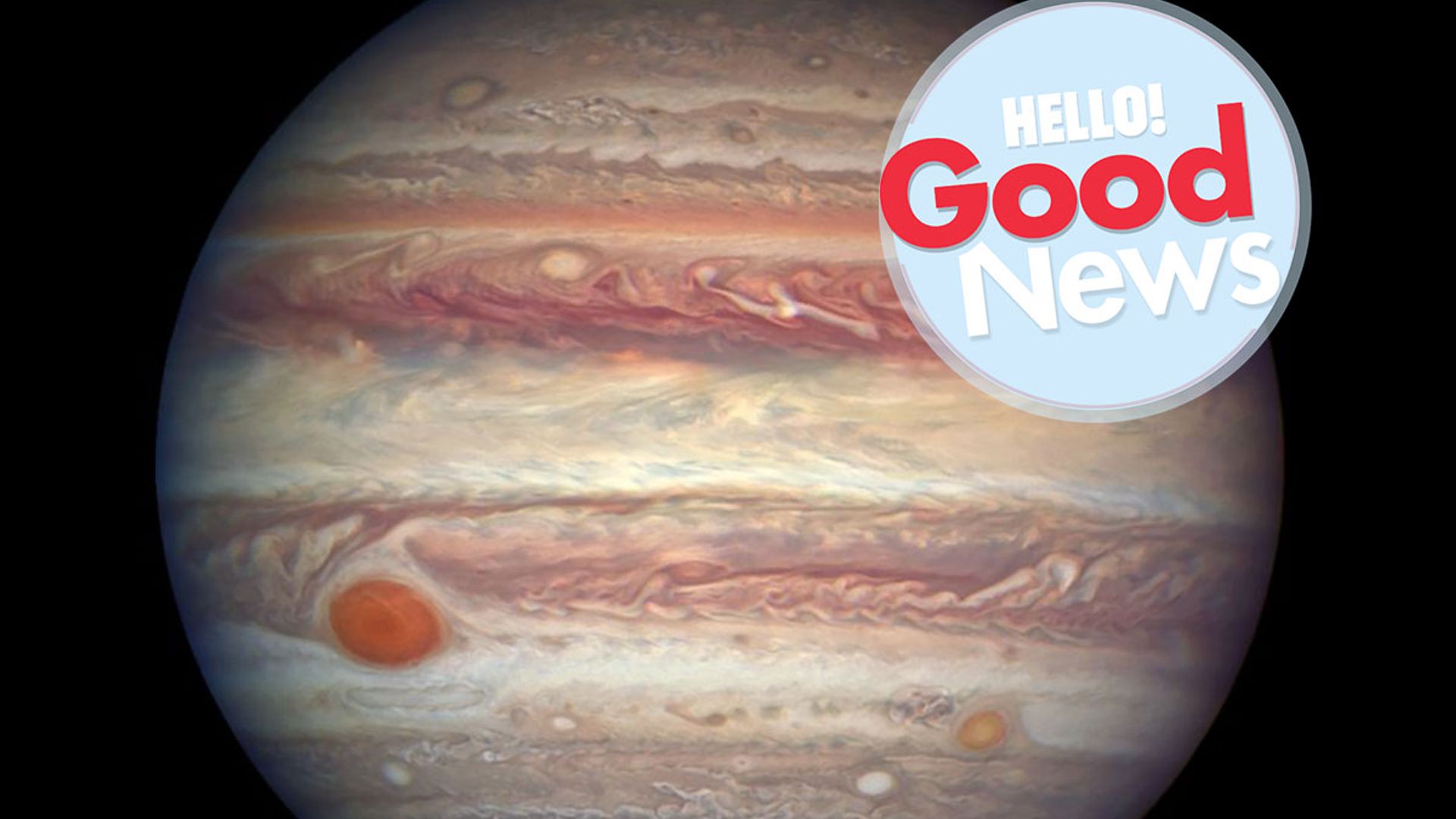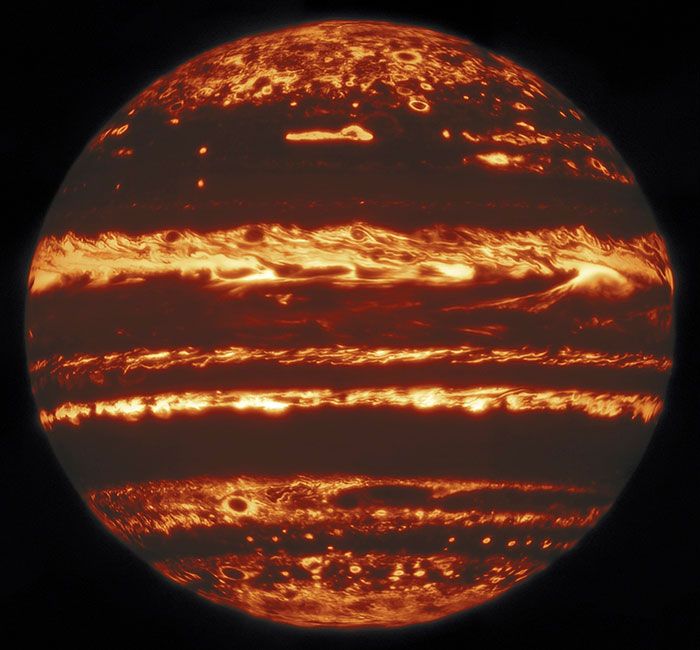Astronomers have produced a stunning new image of the planet Jupiter. The snapshots were taken from the Gemini North telescope on Hawaii's dormant Mauna Kea volcano and show Jupiter in a different light altogether. We are used to seeing images of the planet as a pinky, purple colour but the new infrared picture shows it in a different hue altogether – and has been compared to a 'jack-o-lantern'. Scientists used a technique called 'lucky imaging' to capture the planet in such high-resolution, a technique that takes lots of short exposure images when the Earth’s atmosphere is stable. Only the sharpest images are kept, and these 'lucky' photos were stitched together with data and pictures from Juno and Hubble to create the clearest, sharpest image of the planet. "These images rival the view from space," said Michael Wong of UC Berkeley, who led the research team.
An amazing new picture of Jupiter has been created by scientists
WATCH: A rare stingray has been spotted swimming in Australia - and the video is mesmerising
The pictures and study revealed a lot about the gas giant. The new observations confirmed to scientists that dark spots in the famous Great Red Spot – the solar system's largest storm that’s been going since at least 1830 – are actually gaps in the cloud cover, and not down to differences in cloud, as previously thought. "Similar features have been seen in the Great Red Spot before, but visible-light observation couldn’t distinguish between darker cloud material, and thinner cloud cover over Jupiter's warm interior, so their nature remained a mystery," said Glenn Orton, a member of the research team.
SEE: What picture NASA's telescope took on your birthday
The images are part of a three-year joint observation programme with the Hubble Space Telescope in support of NASA's Juno mission at Jupiter. The two telescopes have been monitoring Jupiter's weather, and gives insight into it much like meteorologists use weather satellites to observe Earth.
Do you have some Good News you'd like to shout about? Email our Good News ambassador Toff at toff@hellomagazine.com to share your story and visit our Good News channel for more feel-good stories.










